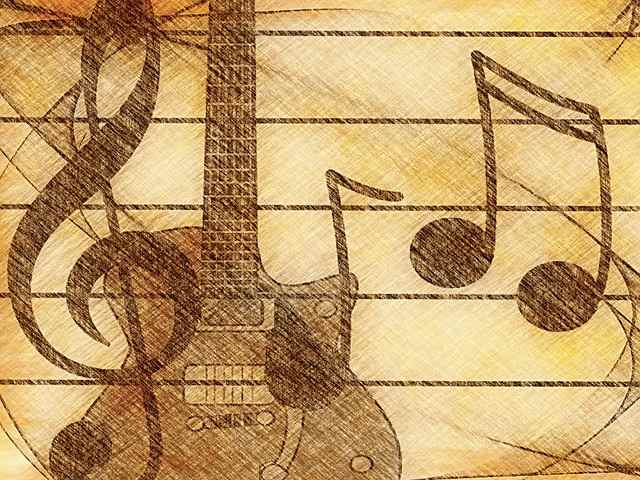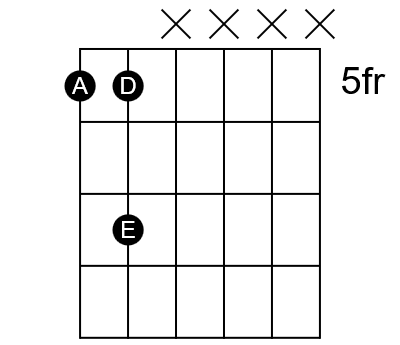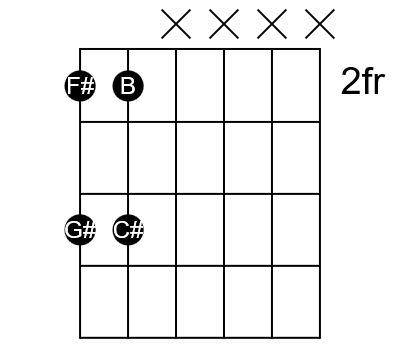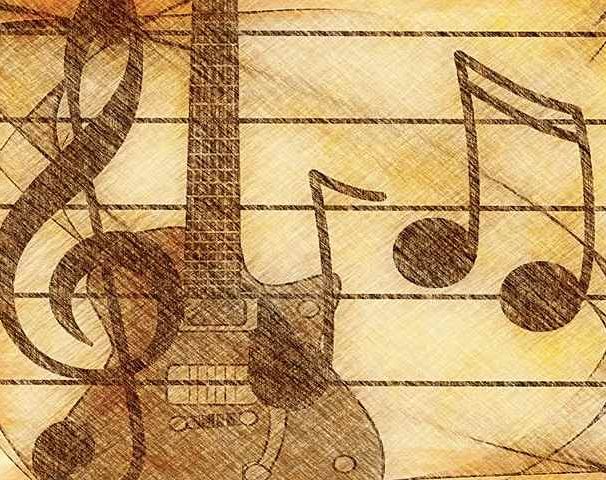
The ability to harmonize the major scale on guitar can help you in several ways. It can provide valuable clues when you’re trying to learn a song by ear. You can also use the harmonized scale to determine which chords can fit into a song you’re writing. And there are many other benefits. So let’s take a good look at how you can easily harmonize the major scale on guitar regardless of the key your working with.
What is the harmonized major scale?
The harmonized major scale is a series of seven chords that play the major scale in harmony starting from the root chord. The root, IV, and V chords of the scale are major chords. The ii, iii, and vi chords of the scale are minor. Finally, the vii(dim) chord is diminished.
Learn more about the harmonized scale at
How to harmonize the major scale anywhere on your guitar
As I said, you can gain quite a lot of benefit from understanding the harmonized major scale. But understanding the concept of the scale and even some of the details does you no good if you can’t find the scale on your guitar.
In fact, there are 12 harmonized major scales to find. Thus, the memorization of which chords go where, which degrees need major chords, where the minor chords fall, and so on can seem overwhelming.
Luckily, there’s an incredibly simple pattern that unlocks the mystery for every key. It’s the Rosetta Stone of how you can easily harmonize the major scale on guitar no matter what key you’re in.
A simple pattern reveals the entire scale

To harmonize the major scale on guitar in any key, first locate the root note of the key you’re dealing with on the Low E string.
Now play a simple pattern. Play the note you chose as the root on the E string. Move to the same fret on the A string and play that note. Finally, move two frets up on the A string for the last note.
And that’s it. That’s the pattern that reveals nearly the entire harmonized major scale on guitar.
And it doesn’t matter which of the 12 major keys you’re in. This same pattern helps you find all of the harmonized chords in that key.
Remember, of the seven chords in the harmonized major scale, you have three major chords. You also have three minor chords. And finally, you have a diminished chord.
If you don’t know the notes on the Low E string, read
Find the three major chords
Now that you know the pattern, let’s use it to find the chords of the scale. We’ll start with the three major chords.
You’ve already decided on the root note and you’ve located that on the Low E string. In a major scale, the root note is always a major chord. Here’s a beautiful thing about the pattern you learned above: the notes that it groups together identify the three major chords of the scale.
From your knowledge of the notes of the guitar fretboard, you know that the 4th degree note sits on the A string at the same fret as the root note on the E string. And you also know that you need only move two frets up from the 4th to find the 5th degree note.
Need help learning the major scale on guitar?
So, the pattern identifies the notes that serve as the root notes of the I, IV, and V chords of the harmonized major scale. And these chords are all major chords. See how this little pattern nicely groups the three major chords together for you?
Find the three minor chords
But it gets even better. This same simple pattern also helps you instantly identify the three minor chords of the harmonized scale.
From your study of the relative minor, you know a couple of important facts. First, the root note of the relative minor sits in the 6th scale degree.
You also know that to find the relative minor of a major key, you just move three frets down from the root note. So, if your major-key root note sits at fret 10 of the Low E string, then you know you can quickly find the 6th scale degree note at fret 7 of the same string.
Need help with the concept of the relative minor?
With this knowledge in mind, move the same three-note pattern down three frets from your major-key root note. Now the pattern identifies the three minor chord root notes.
The 6th- degree note sits on the E string and identifies the root note of the vi chord, the relative minor. The next note of the pattern, the note at the same fret on the A string, identifies the 2nd degree of the major scale. That becomes the root of the ii chord, and that’s also a minor chord.
Finally, the last note of the pattern identifies the 3rd scale degree note. That’s the root note of the iii chord of the harmonized scale, and that’s a minor chord too.
So know you know six of the seven chords of the harmonized major scale on guitar. And you also know which ones are major and which are minor. And it doesn’t matter which major key you’re in, this works for every one of them.
Find the diminished chord
The last chord of the harmonized major scale is the chord based on the 7th degree note. And this chord is a diminished chord.
You can find the 7th degree note in a couple of different ways. You know it’s a half step below the root note, so just drop one fret down from the root note.
Notice that this note also fits nicely into the pattern of minor-chord root notes. Just make it a four-note pattern. Add the note on the E string at the same fret as the higher of the two notes on the A string. That’s the 7th degree note of the major scale.
Use that note as the root note of the chord and make it a diminished chord to fill out the last chord of the harmonized major scale.
Harmonize the major scale on guitar in any key
Now that you know the pattern and how to use it to identify each of the seven chords, let’s apply that knowledge to a couple of specific major keys to see it in action.
The key of A major

To find the chords of the A major harmonized scale, first locate the A note at fret 5 of the Low E string. That’s your root note. And it identifies your root chord of A.
Now follow the pattern. At fret 5 of the A string you have the note D. That’s the fourth note of the scale. And that’s also the root note of the IV chord of the harmonized scale, D.
Finally, move up two frets on the A string to find the note E, the 5th scale degree. That’s the root note of the V chord of the harmonized scale.
And now you have your three major chords: A, D, and E.

Now, move the pattern down three frets to the second fret. The second fret on the Low E string is F#, and that’s the 6th degree of the A major scale. It serves as the root note for the relative minor, so we know that F#m is the vi chord of the A major harmonized scale.
The next note of the pattern is fret 2 of the A string, the note B. B is the 2nd degree of the A major scale and the root note of the ii chord in the harmonized A major scale. We know it’s a minor chord, so the ii chord is Bm.
Two frets up from there we have C#. That’s also a minor. So the iii chord of the A major harmonized scale is C#m.
And finally, one fret down from the root note we have G# as the 7th scale degree. It serves as the root note of the vii(dim) chord. So the last chord of the A harmonized major scale is G#dim.
The key of C major
The system works in any major key. Let’s use it to find the chords in the harmonized major scale for C major.
First find C at fret 8 of the Low E string. That’s your root. Apply your pattern to find F and G as the IV and V of the harmonized scale.
Move down three frets on the E string to find your vi, the relative minor, A at fret 5. D and E are your ii and iii chords respectively.
Finally, fret 7 on the E string gives you B, so Bdim is your last chord of the harmonized scale.
It works for any major key
The pattern works just as effectively in any major key. Even major keys that aren’t typical for guitar-based music like C# or Bb. Just apply this simple pattern starting at the root note on the E string. You’ll nearly instantly identify all seven chords in the harmonized scale for whatever key you’re working with.
Conclusion
The harmonized major scale consists of seven chords. These chords harmonize the major scale. There are three major chords, three minor chords, and one diminished chord.
An extremely simple pattern helps you quickly and easily identify each of the seven chords on your guitar fretboard. This pattern groups the three major chords together. You can then move the pattern to find the three minor chords and the diminished cord, which are also grouped together.
You’ll be pleasantly surprised how easy it is to identify the chords of any harmonized major scale with this simple pattern.
